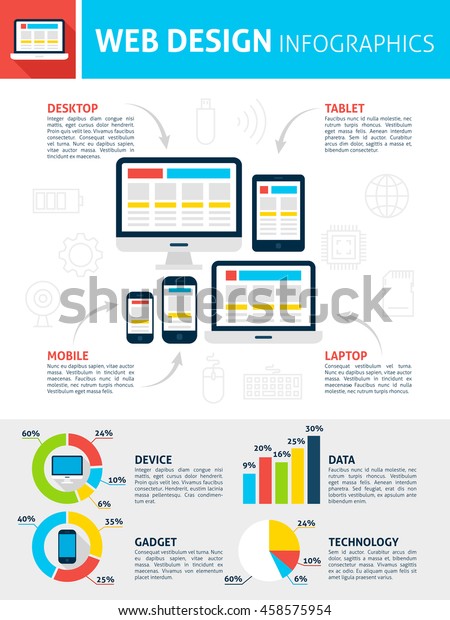Intrigued In Finding Out Exactly How Website Design Has Changed Throughout The Years? Discover The Development From Fundamental, Straightforward Layouts To User-Centered Techniques That Prioritize The Needs And Choices Of Online Site Visitors
Intrigued In Finding Out Exactly How Website Design Has Changed Throughout The Years? Discover The Development From Fundamental, Straightforward Layouts To User-Centered Techniques That Prioritize The Needs And Choices Of Online Site Visitors
Blog Article
Writer-Carstens Wong
In the past, websites were basic and concentrated on details. Navigating was straight, and style was for desktops. Now, customer experience is key. Information guides layouts for simple navigation. Responsive formats match various gadgets. https://what-is-search-engine-opt87531.worldblogged.com/35748958/increase-your-online-presence-with-advanced-website-design-techniques , dark mode reduces strain, and minimalist food selections boost navigating. Interactive attributes involve individuals, and vibrant visuals attract attention. AI integration increases engagement. See exactly how design has developed to improve your on-line trip.
Very Early Days of Website Design
In the early days of website design, simplicity reigned supreme. Web sites were standard, with limited shades, fonts, and designs. The focus was on giving details instead of flashy visuals. Customers accessed the internet via sluggish dial-up links, so speed and functionality were key.
Navigation menus were straightforward, generally located at the top or side of the page. Websites were created for home computer, as mobile browsing wasn't yet common. Content was king, and developers prioritized very easy readability over intricate layout components.
https://www.fool.com/the-ascent/small-business/e-commerce/articles/cpa-marketing/ was the key coding language used, and designers had to function within its constraints. Computer animations and interactive features were minimal compared to today's criteria. Web sites were static, with little dynamic content or individualized customer experiences.
Surge of User-Focused Layout
With the development of website design, a change in the direction of user-focused style principles has actually become increasingly famous. Today, producing websites that prioritize individual experience is essential for engaging visitors and accomplishing organization objectives. User-focused design includes recognizing the needs, choices, and habits of your target audience to customize the site's layout, material, and includes as necessary.
Designers currently carry out extensive research, such as customer studies and functionality testing, to gather understandings and responses directly from customers. This data-driven method aids in creating user-friendly navigation, clear calls-to-action, and aesthetically attractive user interfaces that reverberate with visitors. By positioning the user at the facility of the layout process, sites can provide a much more tailored and pleasurable experience.
Receptive style has actually additionally emerged as a vital element of user-focused style, guaranteeing that sites are enhanced for numerous devices and screen sizes. This adaptability enhances access and functionality, catering to the diverse methods customers communicate with internet sites today. Essentially, the surge of user-focused layout indicates a shift towards creating digital experiences that prioritize the requirements and expectations of the end individual.
Modern Trends in Web Design
Explore the most up to date patterns forming web design today. One popular trend is dark mode design, providing a streamlined and modern appearance while decreasing eye strain in low-light atmospheres. One more key pattern is minimal navigation, simplifying food selections and boosting customer experience by focusing on essential elements. Integrating micro-interactions, such as animated switches or scrolling results, can produce an extra interesting and interactive web site. Receptive layout continues to be vital, making certain smooth user experiences throughout numerous devices. Additionally, making use of strong typography and unbalanced formats can add aesthetic rate of interest and draw attention to certain material.
Integrating responsive website development , like chatbots for customer support or personalized suggestions, improves user interaction and improves procedures. Availability has additionally end up being a significant trend, with developers focusing on inclusive design techniques to deal with diverse user demands. Embracing sustainability by enhancing internet site efficiency for rate and effectiveness is another arising pattern in web design. Working together with individual feedback and data analytics to repeat and boost style continuously is vital for remaining appropriate in the ever-evolving digital landscape. By welcoming these contemporary fads, you can develop an aesthetically appealing, straightforward web site that resonates with your target market.
Conclusion
As you reflect on the evolution of site style from the very early days to currently, you can see exactly how user-focused style has actually come to be the driving force behind modern trends.
Embrace the journey of modification and adaptation in website design, always keeping the customer experience at the forefront.
Stay present with the most recent fads and technologies, and never ever stop progressing your technique to create aesthetically sensational and straightforward internet sites.
Progress, adjust, and create - the future of website design is in your hands.
